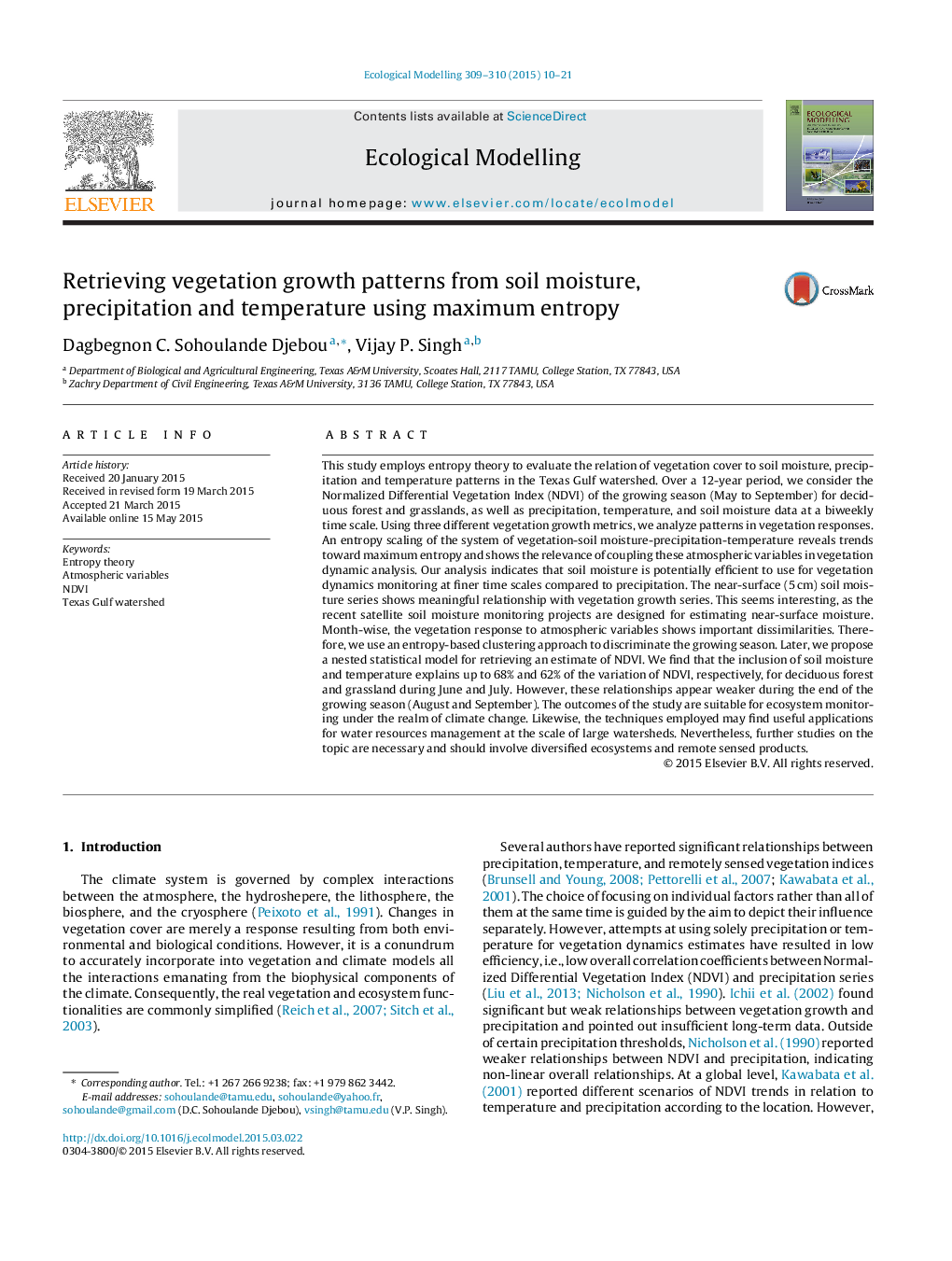| Article ID | Journal | Published Year | Pages | File Type |
|---|---|---|---|---|
| 4375671 | Ecological Modelling | 2015 | 12 Pages |
•Entropy theory employed to address vegetation patterns in relation with climate variables.•Relationship between NDVI, Precipitation, soil moisture, and temperature, are examined.•The coupling soil moisture and temperature significantly captures vegetation dynamics.•Disparities noted, entropy-based clustering is devised for plant growing season analysis.•Results reveal interesting relationships with potential use in ecology and water resources.
This study employs entropy theory to evaluate the relation of vegetation cover to soil moisture, precipitation and temperature patterns in the Texas Gulf watershed. Over a 12-year period, we consider the Normalized Differential Vegetation Index (NDVI) of the growing season (May to September) for deciduous forest and grasslands, as well as precipitation, temperature, and soil moisture data at a biweekly time scale. Using three different vegetation growth metrics, we analyze patterns in vegetation responses. An entropy scaling of the system of vegetation-soil moisture-precipitation-temperature reveals trends toward maximum entropy and shows the relevance of coupling these atmospheric variables in vegetation dynamic analysis. Our analysis indicates that soil moisture is potentially efficient to use for vegetation dynamics monitoring at finer time scales compared to precipitation. The near-surface (5 cm) soil moisture series shows meaningful relationship with vegetation growth series. This seems interesting, as the recent satellite soil moisture monitoring projects are designed for estimating near-surface moisture. Month-wise, the vegetation response to atmospheric variables shows important dissimilarities. Therefore, we use an entropy-based clustering approach to discriminate the growing season. Later, we propose a nested statistical model for retrieving an estimate of NDVI. We find that the inclusion of soil moisture and temperature explains up to 68% and 62% of the variation of NDVI, respectively, for deciduous forest and grassland during June and July. However, these relationships appear weaker during the end of the growing season (August and September). The outcomes of the study are suitable for ecosystem monitoring under the realm of climate change. Likewise, the techniques employed may find useful applications for water resources management at the scale of large watersheds. Nevertheless, further studies on the topic are necessary and should involve diversified ecosystems and remote sensed products.
